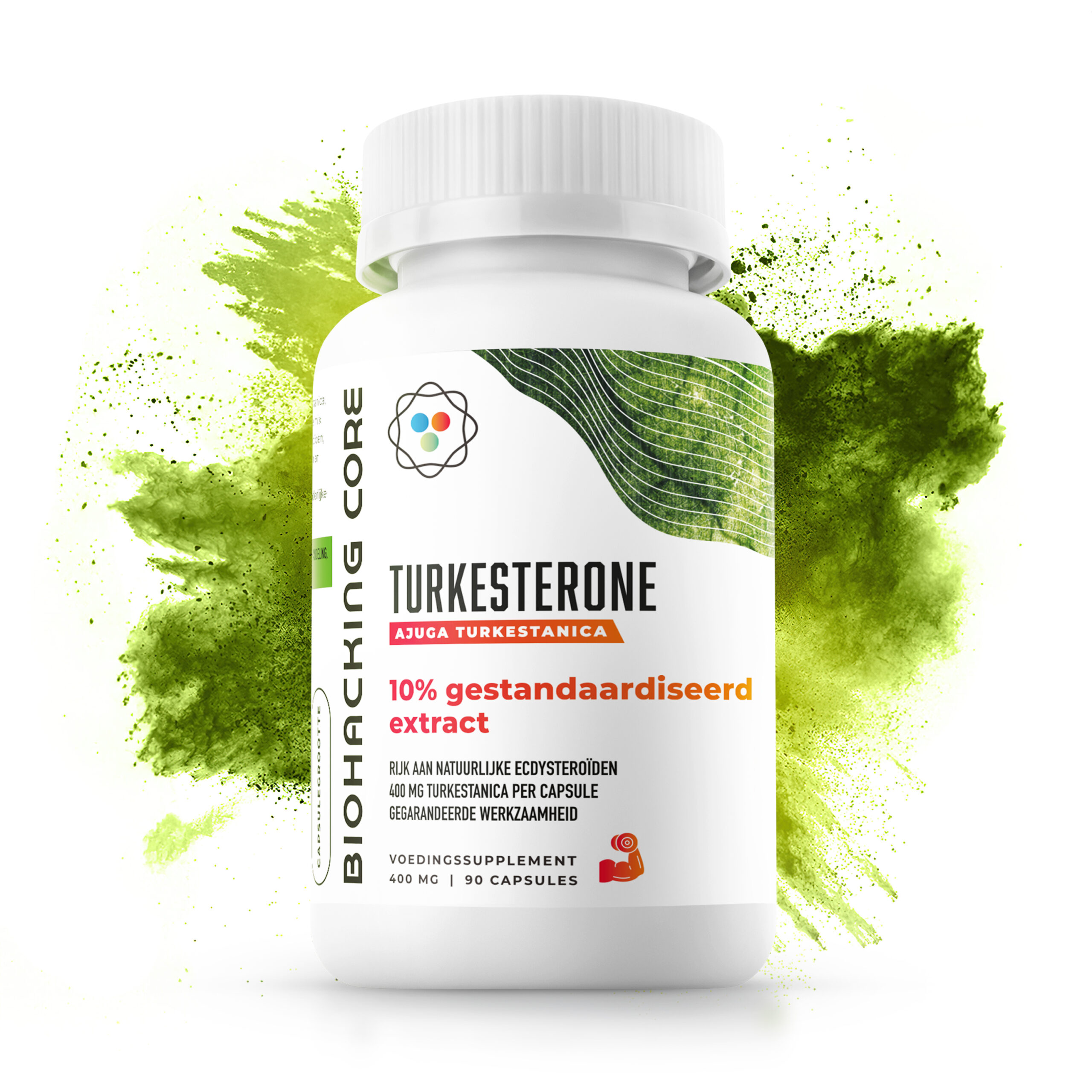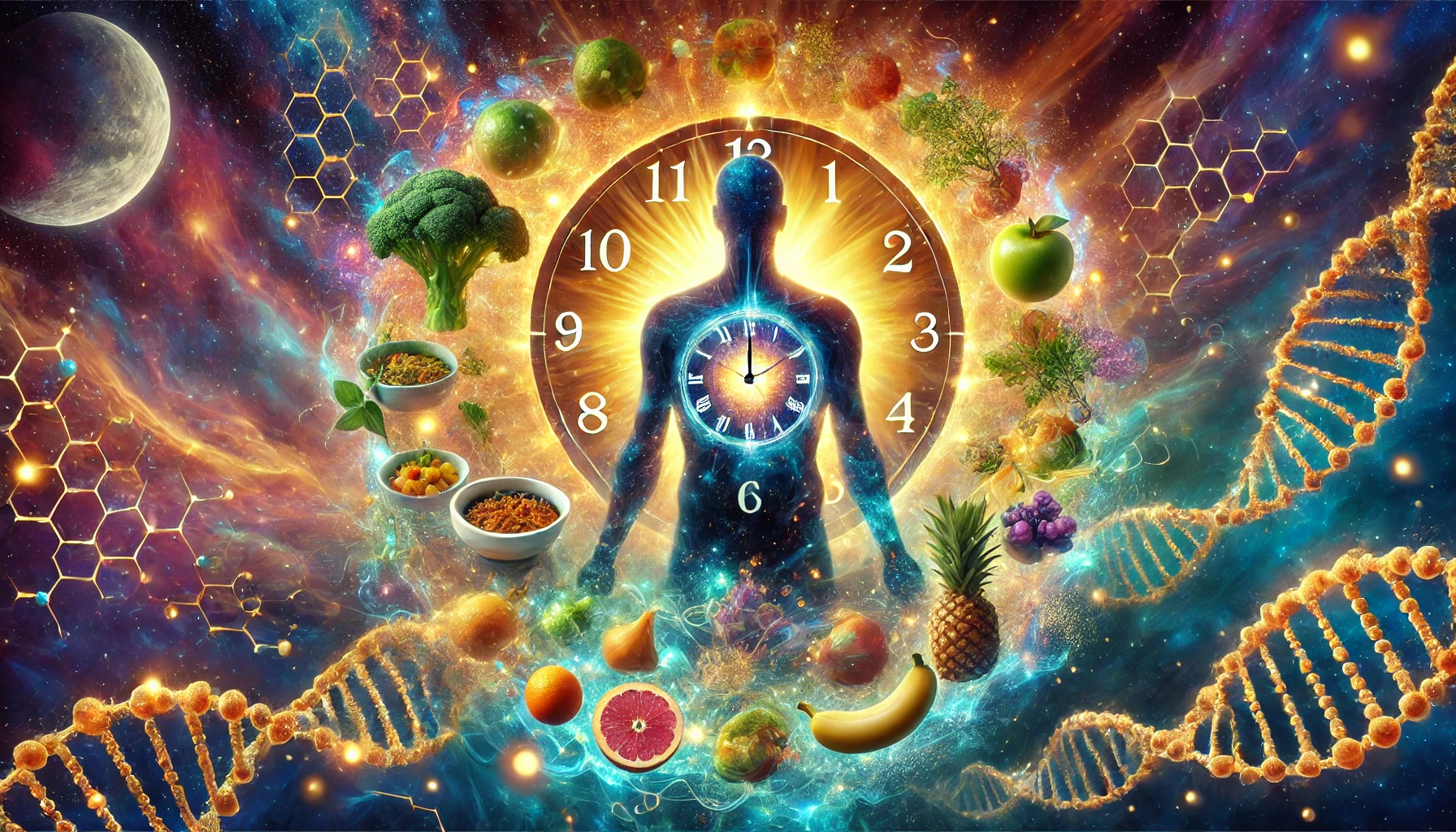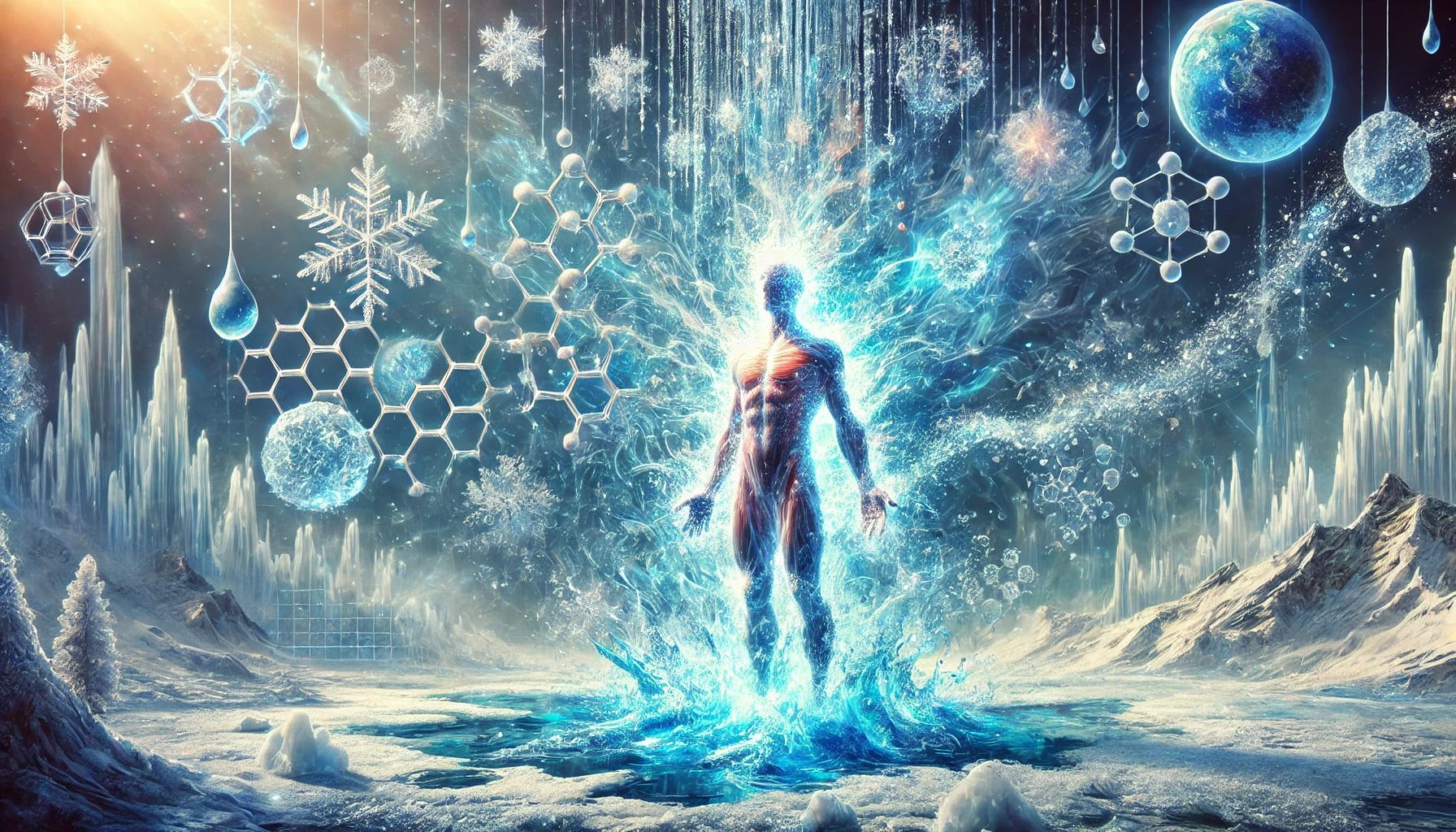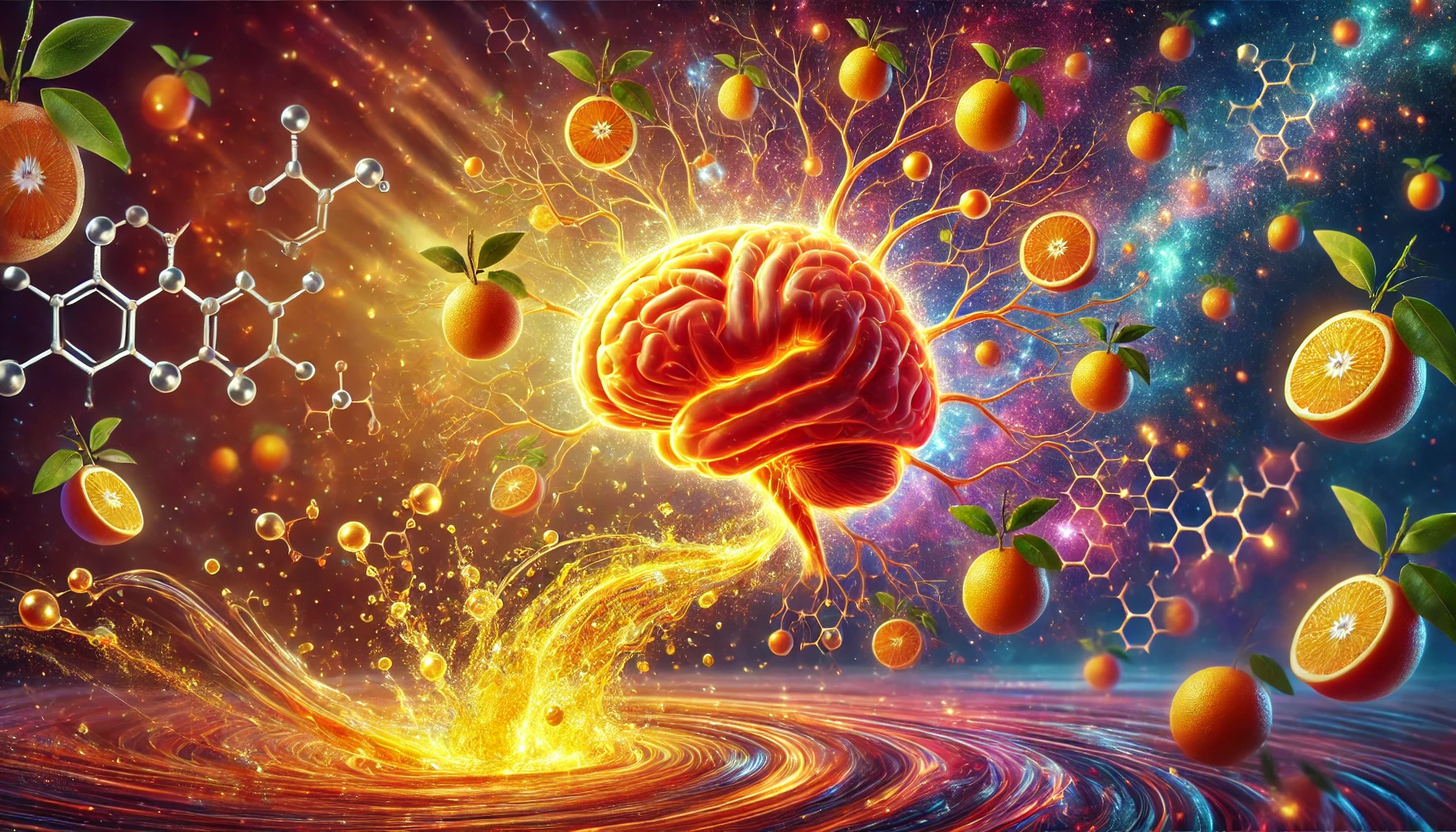

Turkesterone
- Category: Herbal extracts
Quantity
| Quantity | Discounted price | DISCOUNT |
|---|---|---|
| 3-5 | €26.50 | 5%€1.40 |
| 6-9 | €25.67 | 8%€2.23 |
| 10+ | €25.11 | 10%€2.79 |
Change your country
- Your Biohacking Experts.
- Mo-Fr Same day shipping for orders before 17:00.
- Free shipping for orders above 50eu.
- Superior Quality high purity extracts and compunds.
- Quantity based discounts applicable.
Product Overview
Biohacking Core Turkesterone is provided in encapsulated form, delivering 400 mg of standardized Ajuga turkestanica extract per capsule, yielding 10% turkesterone (40 mg). Sourced from the whole herb and formulated with Hydroxypropyl-β-cyclodextrin for stability and solubility, this supplement is produced without unnecessary fillers or allergens and is rigorously tested for purity.
Key Features
- 400 mg Ajuga turkestanica extract per capsule.
- Standardized to yield 10% turkesterone (40 mg per capsule).
- Extracted from the full spectrum of the Ajuga turkestanica herb.
- Formulated with HPBCD for improved stability and delivery.
- Non-GMO, allergen-free, BSE/TSE compliant formulation.
- Tested for heavy metals and microbial safety by independent labs.
Ingredients & Supplement Facts
- Serving Size: 1 capsule
- Servings Per Container: 60
- Amount Per Serving:
- Ajuga Turkestanica Extract (Whole Herb, standardized to 10% Turkesterone): 400 mg
- Providing Turkesterone: 40 mg
- Other Ingredients: Hydroxypropyl-β-cyclodextrin, Cellulose (capsule shell).
Suggested Use
1–2 capsules daily*
Quality You Can Trust
Each batch of Biohacking Core Turkesterone is standardized to a minimum of 10% turkesterone (typically ~10.5%) as confirmed by Certificate of Analysis. Independent testing ensures the extract is free from harmful heavy metals (Pb, Hg, Cd, As within regulatory limits) and microbial contaminants (E. coli, Salmonella, Staph. aureus negative). Manufactured under strict EU quality guidelines with a clean-label approach, using HPBCD for optimal formulation performance.
Packaging & Storage
- Packaging: 60 capsules per plastic bottle, securely sealed.
- Storage: Store in a cool, dry place. Keep away from sunlight and moisture. Keep bottle tightly closed. Keep out of reach of children.
Warnings & Cautions
- For adult use only.
- Consult your healthcare provider before use if pregnant, nursing, taking medication, or have a medical condition.
- Do not use if safety seal is broken or missing.
Disclaimer
This product is a dietary supplement and is not intended to diagnose, treat, cure, or prevent any disease. This product is NOT medicinal, it is NOT a form of prescription or over-the-counter medication. This product should not replace a balanced diet or healthy lifestyle, it is not a replacement for any medicine or treatment for any health issues. Do not exceed the recommended daily dose. Always consult a medical or dietary professional before making changes to your nutrition. Follow the details on the label.
Latest Blogs
Stay Informed, Stay Ahead: Discover the Latest Insights in Biohacking

Designing Your Morning: Simple Practices to Start Your Day Intentionally
Mornings set the tone for the rest of your day. Yet, many of us start on autopilot—hitting snooze, gulping coffee,...
Read More
Mindful Breathing: Simple Techniques for Pausing and Centering
In the rush of daily life, it’s easy to get caught up in stress and lose our sense of balance....
Read More
Connecting with Nature: Incorporating Outdoor Time into Your Routine
Modern lifestyles often keep us indoors in climate-controlled homes and offices. In fact, people today spend around 90% of their...
Read More
Understanding Eating Schedules: An Introduction to Time-Restricted Eating Patterns
Imagine only eating during certain hours each day and giving your body a rest for the remaining time. This concept...
Read More
Exploring Cold Water Exposure: Understanding the Practice of Cold Showers
Cold water exposure – especially cold showers – has surged in popularity as a wellness trend in recent years. From...
Read More
Vitamin C & Brain Health: Optimize Your Intake
Like most, you’ve probably sought the assistance of compounds to optimize your cognition and brain health. Maybe you struggle with...
Read More
Level Up: Unearth Our Unsurpassed Quality!
CONTACT

5 reviews
top!
Turkesteron gaf me extra energie tijdens mijn trainingen. Voel me sterker en herstel sneller.
Ik was sceptisch over Turkesteron, maar mijn kracht in de sportschool is echt toegenomen. Blij mee!
I tried Turkesteron to support my workouts. My recovery time is shorter and I feel more energetic.
Turkesteron gave me a small but noticeable boost in my lifting routine. Not a magic fix, but helpful.
Only logged in customers who have purchased this product may leave a review.